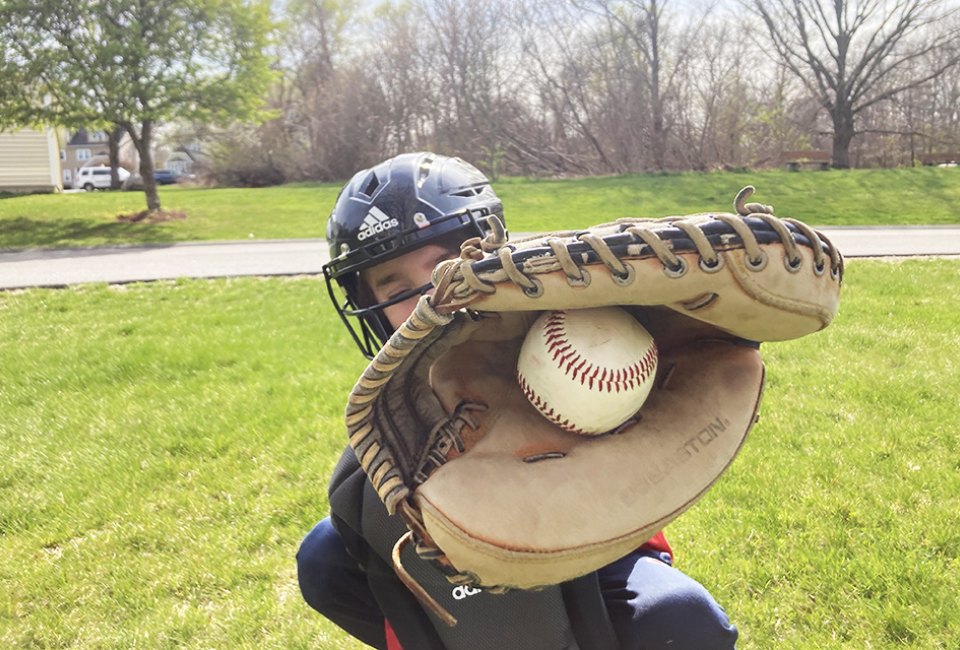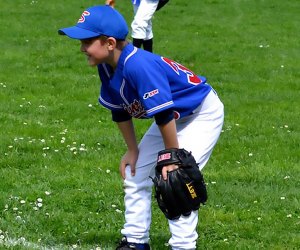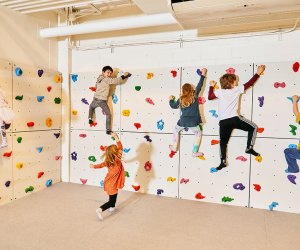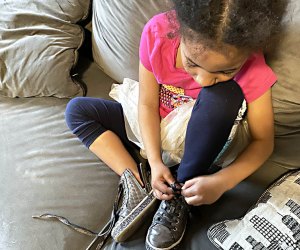6 Little League Baseball Drills You Can Do at Home

Youth baseball is an iconic part of childhood for millions of American families, whether it’s Babe Ruth Leagues, PONY baseball, or Little League baseball. And there are plenty of good reasons for parents to get their kids into baseball or softball. For many of us, baseball gets children outside just as spring lands on our doorsteps. Kids learn to succeed as individuals and as part of a team. They get activity away from screens. And baseball and softball remain two of the safest sports in terms of injury according to the American Academy of Pediatrics.
Read on for tips, resources, and simple Little League baseball drills you can do at home with your little slugger. For more at-home exercises for kids, check out our push-up challenges for kids and our ultimate list of exercise games and indoor activities.
OUR LATEST VIDEOS
Why Kids Should Play Little League Baseball
The best argument for the sport comes from Yogi Berra: “Little League baseball is a very good thing because it keeps the parents off the streets.”
For many parents, finding time to practice baseball drills with their child proves challenging. This is especially true for families that have limited access to a baseball field (or a decent backyard, for that matter). Other parents might not know which Little League baseball drills they should work on with their child. Never fear! We’ve been coached by baseball guru Mark Deschenes of New England’s Life Skills Baseball Academy, and we’ve got our (figurative) cleats on.
If you’re new or newly returned to youth baseball, the information, equipment, and even the language might seem overwhelming. But keeping things basic can take you far.
Keep It Simple, Keep It Fun
“Start with the basics,” Deschenes says. “Let them have fun and have some success. That’s how kids get engaged.” Once your child is engaged, they’ll be asking you to come out and play, not looking for the tablet or the game console.
You don’t need to get every piece of equipment from the sporting-goods store, either. The best Little League baseball drills for young players involve hand-eye coordination. Making a game of it and simply spending that time with your child are going to make it fun and engaging.
Remember That Baseball is a Game of Failure—and That’s Good!
The mark of a successful hitter has long been .300, but that means going hitless 70% of the time. Even the Mighty Casey struck out, sapping all the joy from Mudville. Baseball and softball can challenge players to deal with failure, frustration, and adversity. And that’s a good thing.
Kids grow from trial and error, and the process helps build resilience and confidence. We’ve all heard that it’s how you play the game rather than whether you win or lose. Baseball asks players for patience on the mound, on the field, and at the plate.
At its best, the game teaches kids to be patient with themselves.

Your child will graduate to hard balls before you know it! Photo courtesy of Life Skills Baseball Academy
You Don’t Need a Hard Ball to Learn to Play Hardball
The baseballs themselves get harder as your child progresses from tee ball on up. But if indoor baseball drills conjure images of broken windows or (yikes) shattered fish tanks, you can breathe easy. Many of the Little League baseball exercises that young players can do at home can use balls made of foam or soft rubber. You can find plenty of foam softballs for under $10. Tennis balls are a great training tool as well.
Fielding the Right Online Resources
There is no shortage of videos and articles covering baseball drills. If you’re looking for reliable content, keep an eye out for established organizations like Little League Baseball (where you can also find softball resources) and USA Baseball. Some online courses charge a decent amount of money, so know what degree of instruction you want for your child first.
Your child’s league may be affiliated with a local organization such as Life Skills Baseball Academy. These coaches and tutors are members of the local baseball or softball community who often create innovative and engaging content to help parents nurture a child’s development.
And if you struggle with the vocabulary, Major League Baseball has an online glossary.

Even Major Leaguers practice hitting off the tee.
Baseball Drills for Your Little League Slugger
Remember to encourage a proper stance. When batting, your child's feet should be a little more than shoulder-width apart with their knees slightly bent. The bat should be held off their back shoulder. When fielding, their feet should remain shoulder-width apart; the child should bend at the waist and keep their weight on the balls of their feet. Their glove should be held out and toward the ground, waiting to make a play.
Here are six simple Little League baseball drills that work for athletes of any age and at every stage of development.
1. Tee Time
This exercise might sound like something your child has already outgrown. However, the basics of hitting for any age, including for big leaguers, get reinforced by using a tee. And any space where you can swing a bat will do. You can DIY a batting tee with a length of PVC pipe or even paper towel tubes before they hit the recycling bin. And a wiffle ball (or even a wad of masking tape) helps keep things safe in tight spaces.
2. Sock It to Them
Mom always told me not to throw things in the house. With this exercise, your little aces can work on their throwing motion with a real ball in a confined space. Find a long, sturdy tube sock. Put a baseball (or softball if it will fit!) inside and pull the sock up your child’s throwing arm. Leave a few inches of slack at the bottom of the sock, so the ball can dangle out of your child's hand. Without cutting off circulation, ensure the sock stays in place with a bit of tape. Now they can throw indoors without taking out an heirloom, though it’s probably best to make sure they throw it away from the television just in case the stitching gives out on the sock!

Help your child become fluid in the field.
3. Two-Knee Fielding
This is one of our favorites. It’s so simple, it can be done on the kitchen floor, but it’s great to soak up some nice weather doing it outside. You begin by getting on your knees, facing each other about six feet apart. Hold your arms out, elbows slightly bent, with your palms forward. Begin with bare hands. Bounce the ball with your right hand to the child’s left. They catch the ball with their left hand, transfer it to their right hand, and bounce it back to you.
Once you’ve gotten this drill down, you can add different twists. Incorporate gloves and make the bounces more challenging. Angle your body slightly to work on their forehand or their backhand. Make sure their movements are fluid and their mechanics are sound. And make sure you’re keeping track of their performance to maintain the enthusiasm and the fun.
4. Wall Ball
This is a great baseball drill when you’re dealing with city real estate. It can be done on the side of a building, inside a garage, or even in a basement, provided you have the room. All you need is a solid wall and a ball with some bounce.
Have your child stand 10 to 15 feet from the wall, while you stand just behind them or beside them. This drill starts easy: you bounce the ball off the wall and the child fields it. As your child gets better, you can start ratcheting up the speed and changing the angle. Fire line drives or create short hops. One of the benefits of wall ball is the player can perform this drill on their own.

Can your child drop the tennis balls and catch them before they bounce twice?
5. Tennis Ball Drops
This is another baseball drill you can do at home, whether inside or outdoors. This drill requires a hard surface, like a kitchen floor or pavement. It’s also fun to do. You begin by holding two tennis balls out, with your palms facing down. The object is for the child to try and collect both balls before they bounce twice. Count how many times in a row your child can snag both tennis balls and challenge them to top that score. Like other drills, this exercise will help your kids develop hand-eye coordination. It also helps them with the patience and anticipation associated with baseball.
6. An Old-Fashioned Game of Catch
Another simple drill is one of the oldest in the game. Catching and throwing are crucial aspects of baseball. This is one that might require a trip outside, but it's worth it. In addition to improving skills, playing catch offers a unique opportunity to spend precious time with your child. The hectic schedule, the nonsense at work, whatever fiasco is on the news—these things recede into the background when the two of you toss a baseball or softball together. I cherish those moments because it feels like it’s just my son and me, occupying a simple little space where we’re just enjoying a ball game.
Unless noted, photos by the author





















































